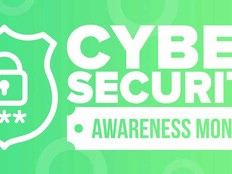The Changing Nature of Federal Work and Network Security
Driven by the coronavirus pandemic, the need to support remote work has been a catalyst for the evolution of the federal network infrastructure. The U.S. government has over two million full-time employees. According to a survey conducted by the Government Business Council in September, 63 percent of the federal workforce was teleworking full time when the survey was published. That’s over a million employees accessing electronic government resources from potentially less secure computing environments such as home networks.
Online collaboration platforms, the potential presence of personal devices and nonemployee users in home-office networks, and the rising dependence on digital applications have expanded the attack surface, increased complexity and made it more challenging for agencies to protect and manage their networks.
The trifecta of managing risks associated with remote work, mitigating increasingly sophisticated cyberattacks and managing network complexity will affect the outcome of digital innovation in government.
However, success can only happen if the government makes fundamental changes to how federal networks function. To achieve success, federal agencies should adopt cybersecurity platforms that converge security and networking solutions into a single, holistic system designed to provide visibility across the entire distributed environment, providing the means to manage both security and network operations easily and centrally.
MORE FROM FEDTECH: Find out how agencies can benefit from DNS security.
Why Securing the Mission Keeps Getting Harder
A recent study revealed that almost 80 percent of organizations add new digital innovations faster than they can secure them against cybersecurity threats.
Government networks are expanding and transforming to keep up with the demands of today’s digital economy and implement federal digital transformation. As a result, the millions of new connected devices and endpoints that are now part of those networks need to be protected.
These new networks are more complex, more distributed and continually adapting to shifting requirements. Traditional solutions and siloed security approaches are no longer suitable, especially given the volume and variety of data and applications that these networks have to process, store and maintain.
EXPLORE: Find out how next-generation endpoint security tools can protect remote workers.
Addressing the Challenge of Security from the Edge to the Core
Multiple edge environments — WAN, multicloud, data center, remote worker, IoT and others — are increasingly replacing the traditional network perimeter, each with its own unique risks. One of the most significant advantages malicious cyber actors have is that as these edges proliferate and grow increasingly interconnected, many agencies have focused on optimizing performance at the expense of centralized visibility and unified control.
Many federal agencies are trying to secure their digital transformation efforts using legacy security management tools that offer little integrated visibility into workflows and policies. Some agencies still use outdated, siloed security solutions that can’t communicate with each other automatically and in real time. Security tools that cannot see each other or work together to identify and mitigate threats reduce visibility and control, enabling threats to slip through gaps.
Security-driven networking strategies resolve these challenges because they integrate networking and security capabilities to enable consistent protection on any edge — the WAN edge, cloud edge and even the home office edge when employees work remotely. By converging security and networking, data and critical IT resources can be protected without compromising the flexibility and performance that these modern network technologies offer.
The latest generation of security technology leverages this convergence between networking and security. These advanced security solutions are designed to be part of a more extensive, integrated security network ecosystem, providing the hyperscale performance and hyperautomation modern enterprise networks increasingly need. Successful and secure digital transformation cannot occur unless security is part of every network solution, from the core to the edge.
Effective security solutions need to be integrated with other IT services and based on ecosystems of shared interoperable capabilities. A security-driven network ecosystem provides integrated security solutions to federal agencies for comprehensive end-to-end security. This ensures that no security tool functions in isolation but instead as part of an integrated security framework, sharing threat intelligence and coordinating responses to potential threats.
To address security challenges, federal agencies should aim to adopt security-driven network solutions that provide broad visibility and control of an organization’s entire digital attack surface to minimize risk. This should be part of an integrated strategy that includes reducing the expense and complexity of supporting multi-point products and building an automated workflow to increase security operations’ speed.
In short, to better protect federal IT networks from attacks and to secure data from cyber adversaries, agencies need to adopt advanced, security-driven networking strategies designed to improve visibility and automatically deliver a rapid, coordinated response to threats, anywhere and everywhere they occur.











